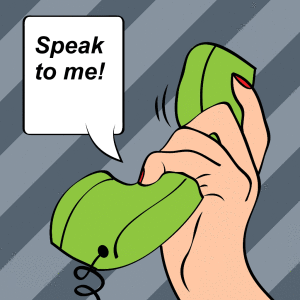“All I did was take her idea and run with it,” I protested.
 “Not according to her,” said Gail, our resident writer. “She tells me that your comments are changing her life.”
“Not according to her,” said Gail, our resident writer. “She tells me that your comments are changing her life.”
I said, “I just met her for coffee and to find out what has been going on. She told me she was thinking about talking to people who stage houses for sale to see if she could get them to display some of her paintings.”
Boy, drawled Bubba, “You’re jus’ like a chicken, you don’t praise your own soup. What did you tell that sweet thing?”
“She’s an artist,” I said. “She’s started painting full time and has been successful at some local art fairs. She’s starting to get interest…not enough to get into a regular gallery yet, but interest. She suggested the staging thing and my marketing brain kicked in.”
“Thas’ all well and good,” said Bubba, “but will you tell us what you told her?”
“This is a perfect example of how I define marketing:
- Go where the money is
- Sell what they want to buy
- Do it again
“I told her to think about the kind of houses that get staged. They are what I call McMansions. They start north of $400,000. Around here most of them have fireplaces.
The one place in a house like that which a painting of size will get noticed is above the fireplace. The painting must be big enough to hang there and command the space. It has to be an original. That’s the only way to get a good price. Big. Original. Commanding. Expensive.
Selling what they want to buy is where the conversation got interesting. She had been making very expensive photo copies of her work and selling those next to the originals.”
“And the originals sold better,” Kate said, finishing for me.”
“Yes, madam sales master,” I replied. “More importantly she had pretty good sales records of the three major styles she was working in. One approach was selling three times better than the others. Visually it was less complex than either of the others but still gave her a great deal of latitude in which to work. She will build an inventory in that series before moving on to the more complex canvases because she will be able to sell them more quickly.
Of course, I suggested she find some way to acquire the names and e-mails of anyone who saw one of her paintings and wanted to see more. For an artist, as foreign as the idea may be, a good CRM system can be crucial. People who buy original art tend to buy again. Staying in touch with them can be the difference between a hobby and career.”
The Takeaway
- Go where the money is
- Sell what they want to buy
- Do it again
Jerry Fletcher’s blog recaps conversations with clients, prospects and the unruly mob of business development professionals he consorts with. They discuss marketing that works from solopreneur to enterprise level. Jerry Fletcher is the ringleader and “Watson” of the dialogue.
Jerry has been researching and implementing small business marketing that builds businesses, careers and lives of joy for 25 years as President of Z-axis Marketing, Inc. Learn more at www.JerryFletcher.com
Schedule a personal appearance. Jerry speaks internationally on Networking, Marketing and Contact Relationship Magic. www.NetworkingNinja.com









